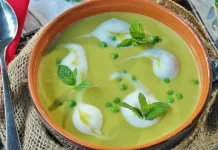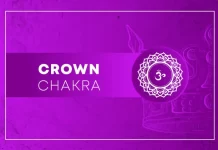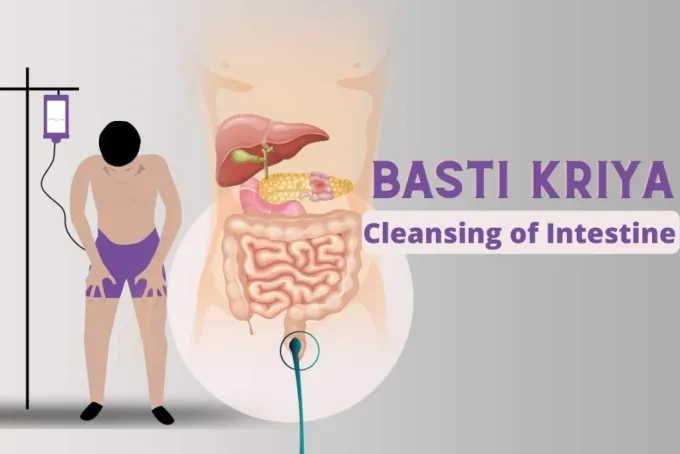Basti Kriya is a technique of replenishing the body internally by cleansing the colon thoroughly. It is one of the six purification techniques known as Shatkarma mentioned in Hatha Yoga Pradipika.
An assortment of activities known as Basti is used to cleanse the intestines.
There are two varieties of Basti-Kriya: Sukshma-Basti, which is dry, and Jala-Basti, which is wet. Jala-Basti is conducted in the water, while Sukshma-Basti is performed on the ground. In the case of constipation, Basti-kriya should be conducted in the morning twice every month; in all other circumstances, once every two months.
Shatkarma, according to the Hatha yoga pradipika, is a preparatory exercise that purifies the body internally before putting the yogi in a position to achieve spiritual objectives.
Like the Basti kriya cleanses the lower abdomen (big intestine) by sucking in water or air via the anus, each Shatkarma technique involves cleansing certain bodily areas.
Medical indications
Hemorrhoids, prostatitis, appendage inflammation, gas, and the existence of fecal fortresses (i.e., slagging) of the rectum are among the medical causes for which Basti is performed. The parasympathetic sacral plexus is stimulated by Basti, which also provides a relaxing effect. As a result, other indications for use include stress, anxiety, and sleeplessness (this is doubly justified because often people tend to “jam” stress, and are far from the healthiest food).
Shatkarma:6 cleansing techniques of Hatha Yoga
There are two techniques of performing Basti kriya to purify the body internally and preparing the body for pranayama and other advanced asanas.
Let’s try to better understand the process by focusing on its meaning, implementation, and benefits.
Basti Kriya Meaning
Something that “resides within a cavity encircled by four walls” is referred to as a “Basti.” Basti can also indicate “to hold” or, less frequently, the urinary bladder.
Basti kriya is related to the Ayurvedic practice of enema, which involves inserting a tube with medicinal fluid into the rectum in order to clean the colon. Removing feces and other pollutants from the colon is the goal of both procedures. The yogic enema is another name for Basti kriya.
Pradipika Basti is described in Hatha yoga as “sitting in Utkatasana, dipping the navel into the water, inserting a tube into the anus, and contracting the anus. It is known as Basti karma to cleanse with water.
The use of this cleansing method can help treat a number of digestive, urinary, and elimination diseases like flatulence, among others.
Basti Kriya Procedure
There are two types of performing Basti kriya, i.e. Jala Basti (with water) and Sthal Basti Kriya (with air). Let’s get into their practice one by one:
1. Jala Basti
Jala Basti was traditionally performed while crouching in a river, but you can instead do it in a bucket or tub of water. Since the water is utilized to cleanse the bowels here, the word “Jala” means “water.”
- Take a tub filled with water and sit or squat over it in Utkatasana. The level of water must come up to the navel.
- Lean forward resting your hands on the knees.
- Suck the water into the large intestine via the anus by expanding the anal sphincter muscles.
- Exhale and perform Uddhiyana bandha and Nauli kriya simultaneously. This will create a vacuum-like suction to draw the water into the lower abdomen and abdominal muscles undergo contraction and churning motion.
- As you stand up, hold the water in your bowels for five to thirty minutes.
- The water should then be expelled through the anus when you exhale. This concludes the first round, which can be repeated three to five more times to completely cleanse the bowels.
Tips to Ease the Jala Basti Kriya
- Beginners should use a catheter to draw the water in because it is an advanced procedure. In the past, bamboo tubes were preferred to plastic tubes or catheters.
- The catheter has to be at least 13-15 cm long, perfectly smooth, and hollow.
- Beginners should not attempt this method because it involves inserting a catheter into the rectum.
- It is crucial to remove the catheter from the anus without exhaling as soon as you reach your limit of kumbhaka (breath retention).
- In the advanced stages where the tube has not required, the rectum is pushed out opening the sphincter muscles with fingers. It is then drawn in performing Uddhiyana bandha then the hand is removed followed by retention of breath and then exhalation.
- Always kneel over the toilet when you are ready to remove the water from the anus since the feces will also be removed from the lower intestine.
- Ensure that the water is completely removed from the bowels.
Follow-up Practice (After Jala Basti Kriya)
- Lie down in Shavasana on a blanket then gradually assume Pashinee mudra. This helps in evacuating any retained water in the bowels via releasing air.
- Return to Shavasana, then rock back and forth on the floor while raising your knees to your chest. You can also rock side to side by opening your arms at shoulder height.
- Again rest in Shavasana for a while and then practice Bhujangasana 3-5 times to expel any remaining water or air.
- Also, you can add Mayurasana to the sequence for better experiences.
2. Sthala Basti
- Lie down on your back at a 60-degree angle to the floor assuming Viparita Karani mudra.
- Now, draw the knees down towards the chest and push the sphincter muscles out and in to fill in the air into the bowels.
- The sucked-in air is held inside and pulled upwards towards the colon performing Nauli kriya. Meanwhile, the air (Apana Vayu) rises upward exerting pressure on the navel region.
- Retain the air inside for a few minutes and then expel it through the anus.
- It forms one round of Sthala Basti and can be repeated 3-5 times as per convenience.
Sthala Basti Variations
Some texts also mentioned that Sthala Basti can also be practiced assuming Pashinee mudra. Advanced practitioners also perform it by holding Paschimottanasana for 2-3 minutes along with practicing Ashwini mudra 20-25 times.
Uddhiyana bandha, which works similarly to Jala Basti in the beginning when doing Nauli kriya, can also be used to draw in the air.
Since this Basti kriya is conducted on the ground, its name, “Sthala,” means “ground.” Because air is utilized to cleanse the intestines, it is also known as Pavana Basti or Vata Basti kriya.
It is sometimes referred to as Shushka Basti, keeping in mind that the air used here is dry.
Basti Kriya Precautions
- People with high blood pressure, hernia, or any severe digestive disorder must avoid Basti kriya.
- Avoid the consumption of food for about 72 minutes after performing Basti kriya.
- Ensure that you have expertise in Nauli kriya and Uddhiyana bandha.
- For the java Basti kriya, always use a sterilized catheter tube and use only clean water neither too hot nor cold.
- It is best to avoid this practice in cloudy, rainy, windy, or stormy weather.
- This practice must be performed in the morning on an empty stomach.
Basti Kriya Benefits
1. Replenishes the bowels
The colon is completely removed or cleansed by the Basti kriya. It cleanses the intestines of any dangerous bacteria, toxic pollutants, accumulated stool, threadworms, and heat.
In this way, practicing Basti kriya is a terrific approach to removing contaminants from the lower intestine that are typically left behind in daily life. As a result, it aids in body detoxification and weight loss.
2. Cures digestive disorders
As pressure is applied to the stomach during the Basti kriya practice, the abdominal organs are benefited. It activates the digestive system’s organs and increases its effectiveness.
Besides facilitating improved digestion, it cures digestive disorders. People suffering from constipation, nervous diarrhea, flatulence, and irritable bowel syndrome gets therapeutic benefits from Basti kriya. It also comes in handy while treating chronic colitis and dysentery with the doctor’s consent.
3. Balances the doshas
Vata, Pitta, and Kapha are brought into balance through the Basti kriya. It balances the tissues and gets rid of too much disease-causing dosha (Dhatus). The body is cleansed, and all the senses function effectively.
4. Enhances skin tone
This exercise increases hunger by internally detoxifying the body. As a result, the body receives the correct nutrition, which is reflected favorably on the skin. Basti hydrates the body, which improves the skin’s texture, tone, and radiance.
5. Stimulates solar plexus
By applying pressure to the abdomen, this yoga exercise activates and fortifies the solar plexus. By affecting the neurological system, it enhances the body’s general health. It permits the stomach, kidneys, liver, and adrenal glands to function effectively.
6. Acts as a remedial practice
By doing the Basti kriya, you can treat conditions like splenomegaly (spleen enlargement), dysuria (urinary abnormalities), colon cancer, or tumors, all of which are highly frequent in men.
What herbs and substances are best used for Basti?
Dashamula tea is frequently used as a herbal decoction in traditional Ayurvedic enema procedures. The “10 roots” formula known as Dashamula is specifically designed to reduce Vata and its associated diseases. Depending on the problems and imbalances present, a variety of different herbs and chemicals may also be employed in Basti therapy.
You can combine Dashamula with other herbs to create a more suitable mixture. For instance, if there is a Pitta imbalance, Dashamul tea and Guduchi can be combined. Alternately, when there is a Kapha imbalance, you can combine Punarnava and Dashami. Depending on the demands of the person, their Prakruti (constitution or Ayurvedic body type), and their Vikruti, most herbs can generally be provided using Basti (current imbalance).
Basti therapy may also involve the use of other drugs. Ghee, medicinal ghee, and sesame oil are a few typical Ayurvedic ingredients. The herbal decoction version indicated above is known as Niruha Basti, which means without oil, whereas using an oil basis for the enema is known as Anuvasan Basti, meaning with oil.
The oil technique works well for disruptions without the presence of contaminants (ama). It is imperative to refrain from using oil or ghee if toxins are present because these ingredients might push the poisons deeper into the tissues. Using oils or ghee can be a highly effective strategy to alleviate Vata, anxiety, dryness, constipation, and general tissue depletion if there are no indications of pollutants. To benefit from the advantages of both therapy, these techniques may occasionally be switched around.
Conclusion
Most illnesses can be cured using the advanced yogic cleansing technique known as Basti kriya. Its definition as “Ardha Chikitsa,” or half of all treatments in the world combined, makes its significance clear.
Thus, conduct the Basti kriya to revive all of your senses and to prepare your body physically, mentally, and spiritually for advanced yogic practices.





















